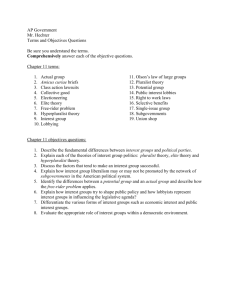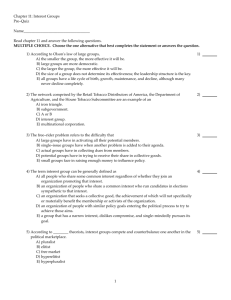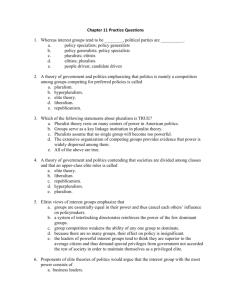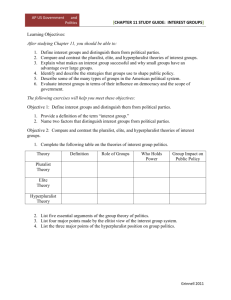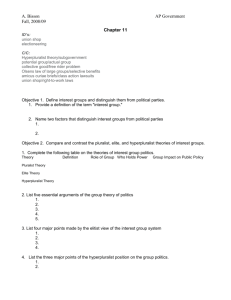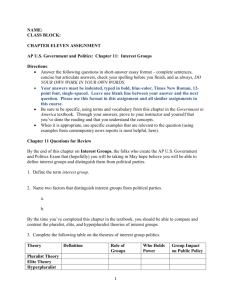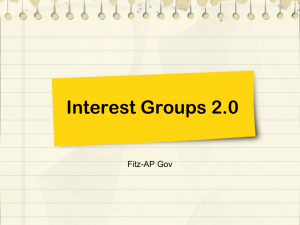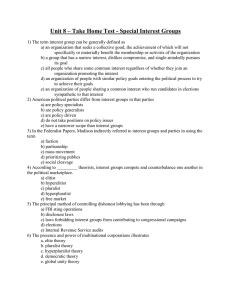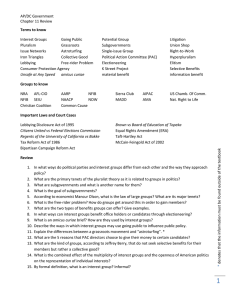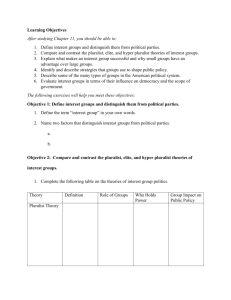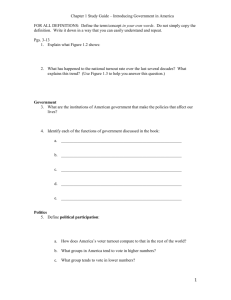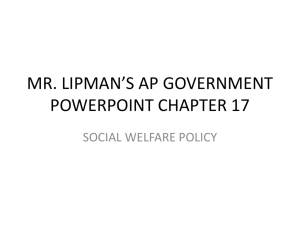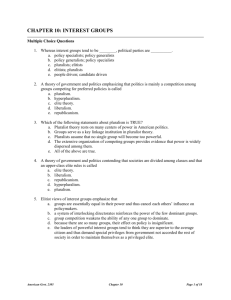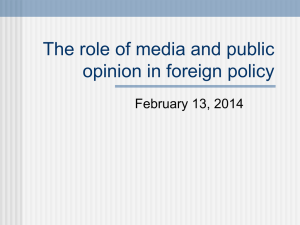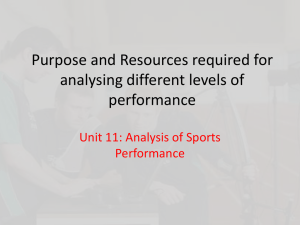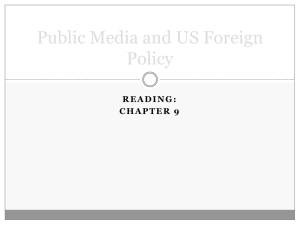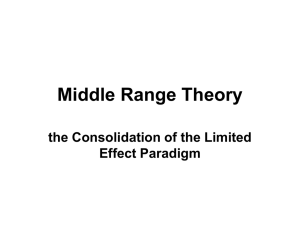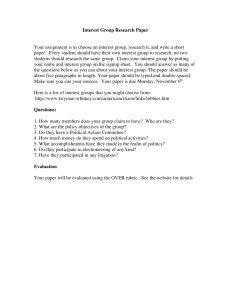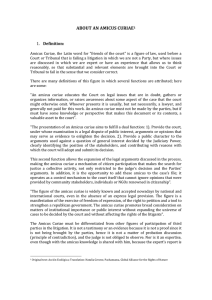Study Guide Chapter 10
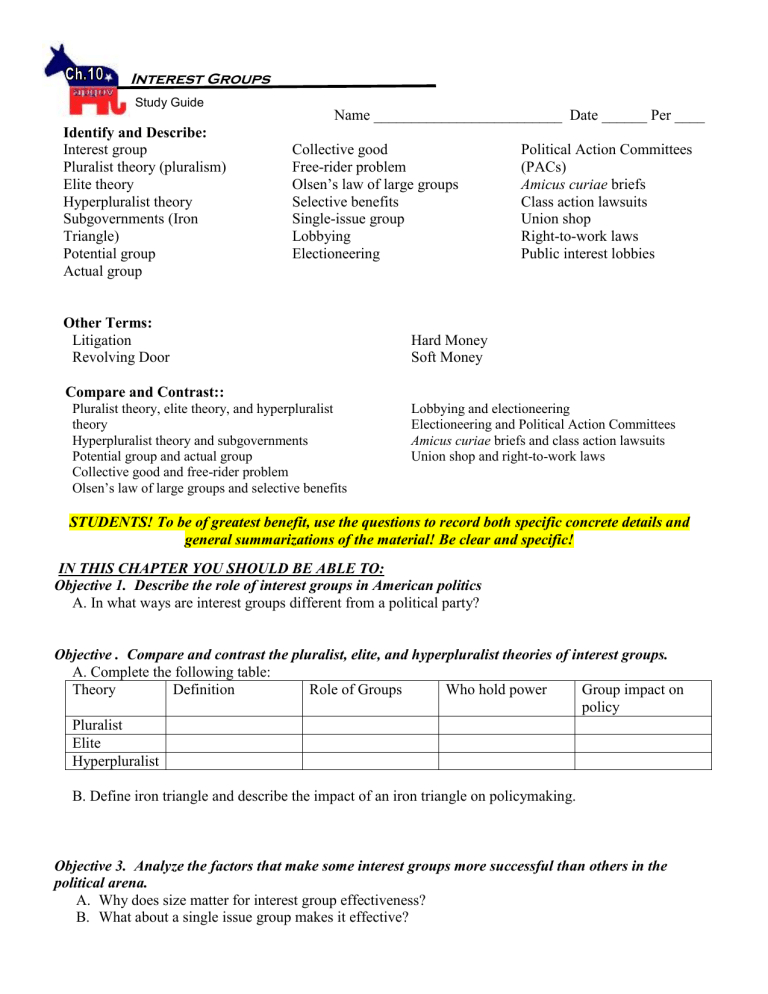
Interest Groups
Study Guide
Name _________________________ Date ______ Per ____
Identify and Describe:
Interest group
Pluralist theory (pluralism)
Elite theory
Hyperpluralist theory
Subgovernments (Iron
Triangle)
Collective good
Free-rider problem
Olsen’s law of large groups
Selective benefits
Single-issue group
Lobbying
Electioneering Potential group
Actual group
Other Terms:
Litigation
Revolving Door
Compare and Contrast::
Pluralist theory, elite theory, and hyperpluralist theory
Hyperpluralist theory and subgovernments
Potential group and actual group
Collective good and free-rider problem
Olsen’s law of large groups and selective benefits
Hard Money
Soft Money
Political Action Committees
(PACs)
Amicus curiae briefs
Class action lawsuits
Union shop
Right-to-work laws
Public interest lobbies
Lobbying and electioneering
Electioneering and Political Action Committees
Amicus curiae briefs and class action lawsuits
Union shop and right-to-work laws
STUDENTS! To be of greatest benefit, use the questions to record both specific concrete details and general summarizations of the material! Be clear and specific!
IN THIS CHAPTER YOU SHOULD BE ABLE TO:
Objective 1. Describe the role of interest groups in American politics
A. In what ways are interest groups different from a political party?
Objective . Compare and contrast the pluralist, elite, and hyperpluralist theories of interest groups.
A. Complete the following table:
Theory Definition Role of Groups Who hold power Group impact on policy
Pluralist
Elite
Hyperpluralist
B. Define iron triangle and describe the impact of an iron triangle on policymaking.
Objective 3. Analyze the factors that make some interest groups more successful than others in the political arena.
A.
Why does size matter for interest group effectiveness?
B.
What about a single issue group makes it effective?
C.
What did the textbook authors find when they examined whether financial resources make an interest group more successful?
Objective 4. Assess the four basic strategies interest groups use to try to shape policy.
A.
For each of the general strategies that interest groups use to try to shape policy, 1) give at least 2 examples of activities that interests groups engage in for each of the general strategies 2) when/why might an interest group choose this strategy?
1.
2.
3.
4.
B.
List four important ways lobbyists can help a member of Congress
1.
2.
3.
4.
C.
What is an amicus curiae brief? Why would an interest group use one?
Objective 5. Identify the various types of interest groups and their policy concerns.
A.
What was the main purpose of the Taft-Hartley Act?
B.
Complete the following chart:
Group Important IG
Examples
Issues they push for/Goals
Strength Anything else you want to remember about them?
Labor
Business
Environmental
Interests
Equality Interests
C. What is meant by a public interest lobby?
Objective 6. Evaluate how well Madison’s ideas for controlling the influence of interest groups have worked in practice.
A.
Look back at the theories of Pluralism, Elite theory and Hyperpluralism. Which do you believe best fits what this chapter emphasizes about interest groups? Does Madison’s open system allow for counterbalance?
B. How do interest groups affect the scope of government?
